太阳能电池
太阳能电池
·编者按·
太阳能电池(太阳能芯片或光电池)一般为光电半导体薄片,可以通过光电效应或者光化学效应将太阳光转化成电能。在环境污染和能源短缺的大背景下,太阳能的利用受到了各国研究人员的广泛关注。太阳能电池作为有效利用太阳能的最佳途径之一,成为国际前沿领域的研究热点。
根据电池结构的发展,太阳能电池可分为第1代晶体硅太阳能电池、第2代薄膜太阳能电池和第3代新型太阳能电池等。其中晶体硅太阳能电池又可以分为单晶硅太阳能电池和多晶硅太阳能电池;薄膜太阳能电池包括非晶硅薄膜太阳能电池、多晶硅薄膜太阳能电池、化合物薄膜太阳能电池(铜铟镓硒、碲化镉电池)等;第3代新型太阳能电池通常包括聚合物薄膜太阳能电池、染料敏化太阳能电池、量子点敏化太阳能电池和钙钛矿太阳能电池等。
作为第3代太阳能电池中发展迅猛的钙钛矿太阳能电池,其性能已经超越了其他类型电池多年的积累,2013年,被《Science》评为国际十大科学突破之一。
本专题得到林红教授(清华大学)的大力支持。
·热点数据排行·
截至2017年1月10日,中国知网(CNKI)和Web of Science(WOS)的数据报告显示,以“太阳能电池”为词条可以检索到的期刊文献分别为4735、 8327条,本专题将相关数据按照:研究机构发文数、作者发文数、期刊发文数、被引用频次进行排行,结果如下。
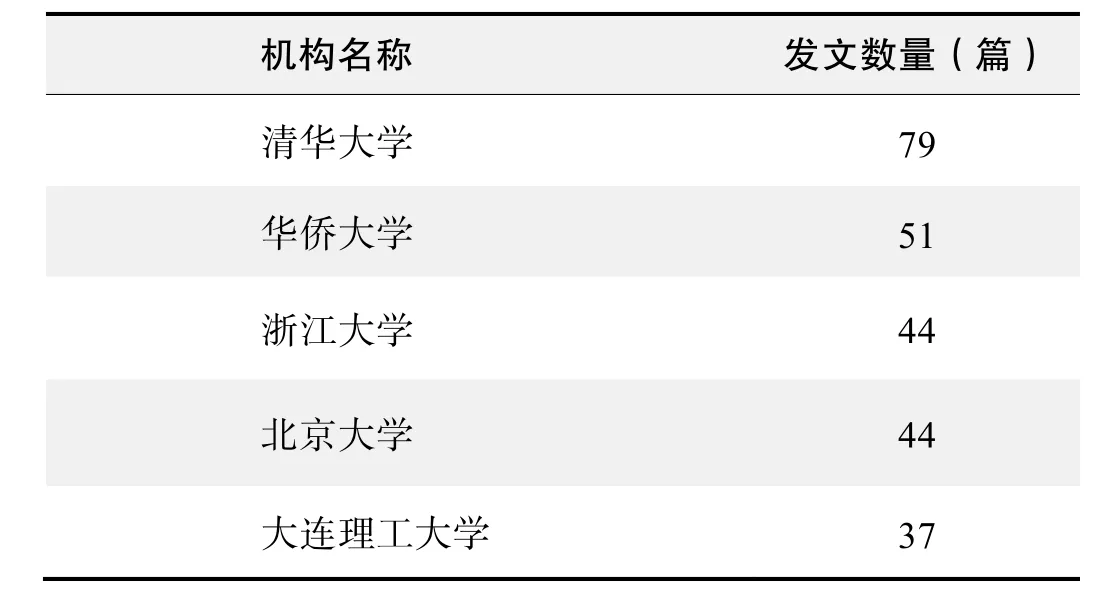
研究机构发文数量排名(CNKI)
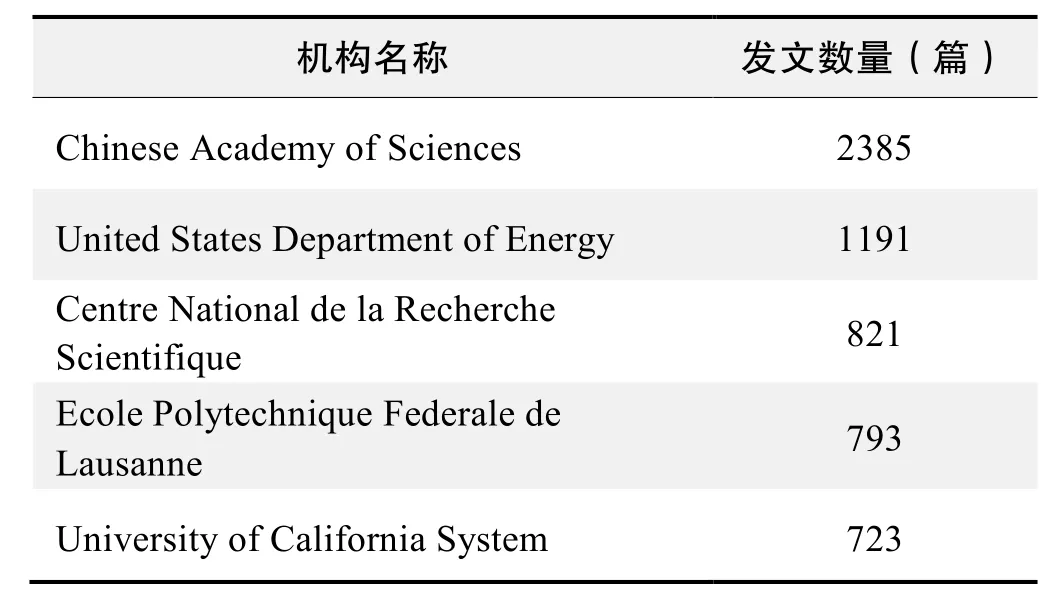
研究机构发文数量排名(WOS)

作者发文数量排名(CNKI)
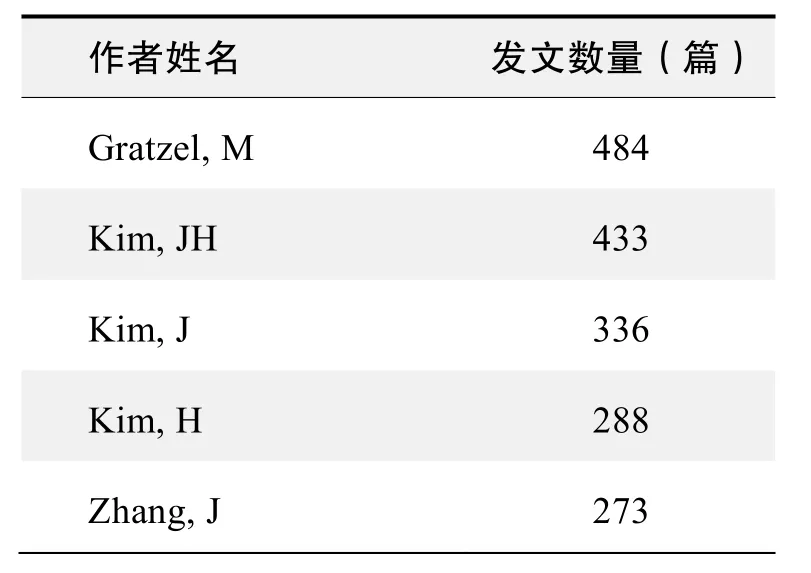
作者发文数量排名(WOS)
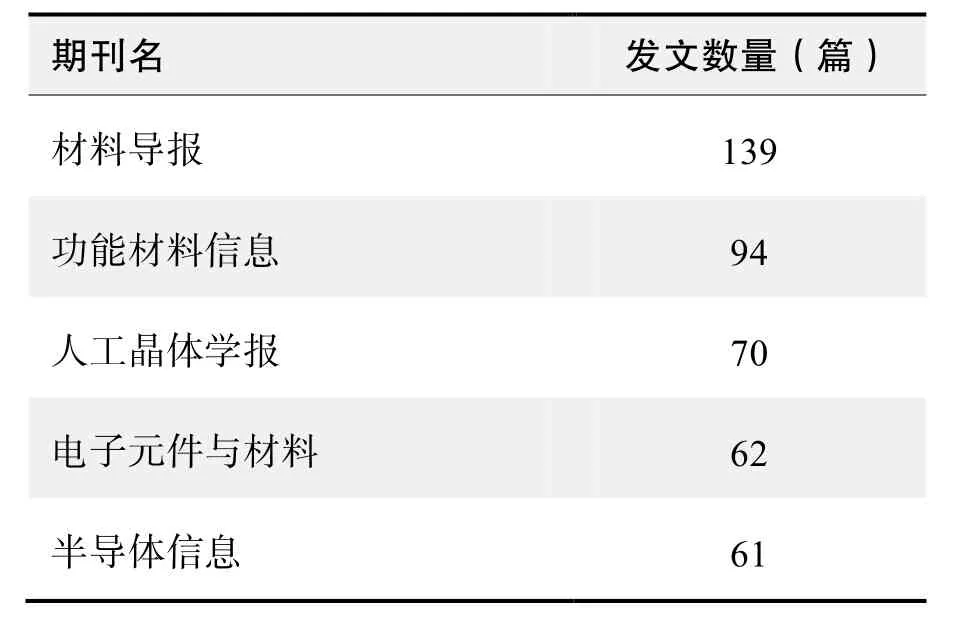
期刊发文数量排名(CNKI)

期刊发文数量排名(WOS)
根据中国知网(CNKI)数据报告,以“太阳能电池”等为词条可以检索到的高被引论文排行结果如下。
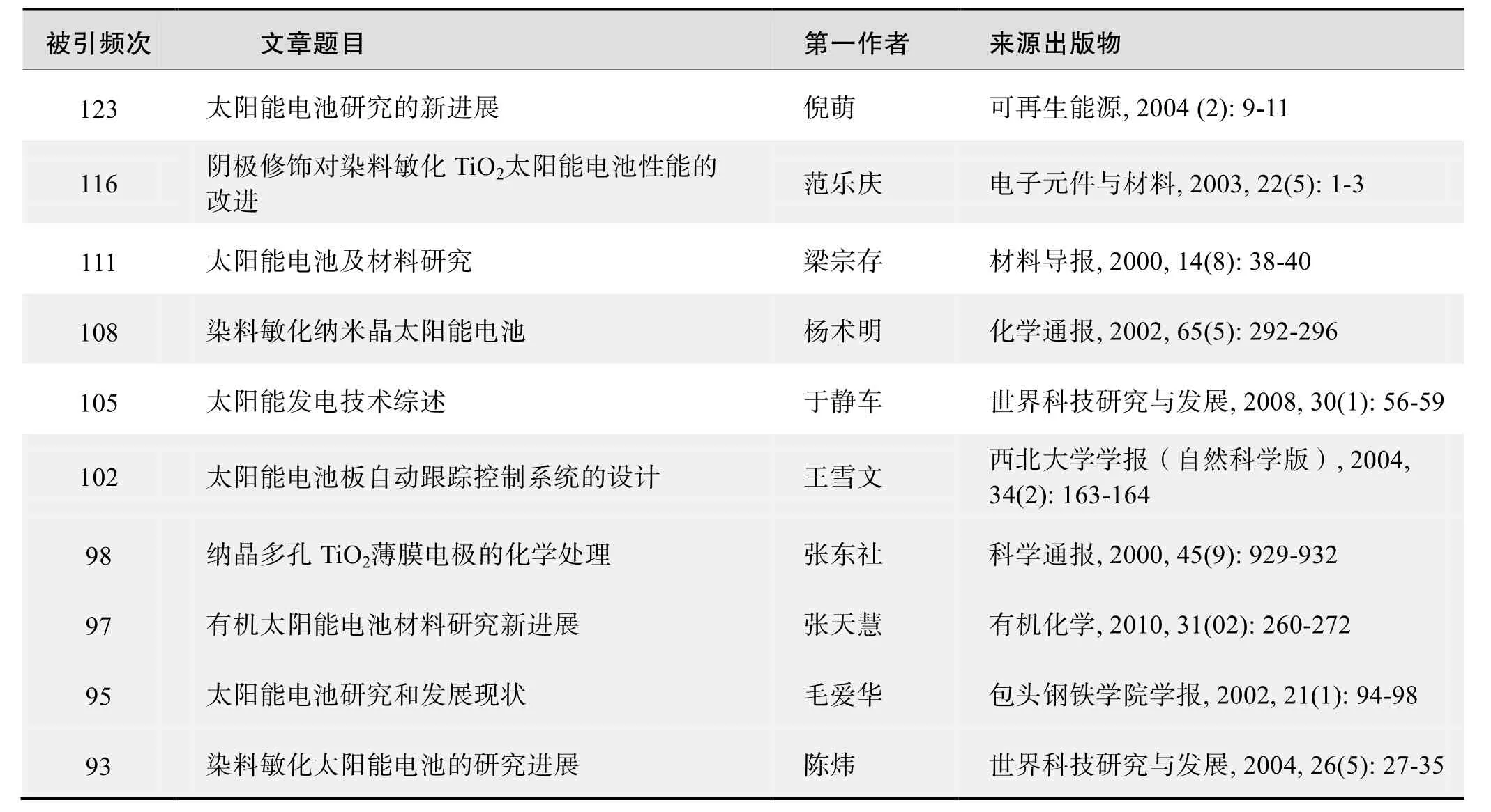
国内数据库高被引论文排行
根据Web of Science统计数据,以“太阳能电池”为词条可以检索到的高被引论文排行结果如下。

国外数据库高被引论文排行
·经典文献推荐·
基于Web of Science检索结果,利用Histcite软件选取LCS(Local Citation Score,本地引用次数)TOP 50文献作为节点进行分析,得到本领域推荐的经典文献如下。
A thin‐film, two‐layer organic photovoltaic cell has been fabricated from copper phthalocyanine and a perylene tetracarboxylic derivative. A power conversion efficiency of about 1% has been achieved under simulated AM2 illumination. A novel feature of the device is that the charge‐generation efficiency is relatively independent of the bias voltage, resulting incells with fill factor values as high as 0.65. The interface between the two organic materials, rather than the electrode/organic contacts, is crucial in determining the photovoltaic properties of the cell.
来源出版物:Applied Physics Letters, 1986, 48(2): 183-185
A low-cost, high-efficiency solar cell based on dye-sensitized
Oregan, B; Ratzel, M
Abstract:The large-scale use of photovoltaic devices for electricity generation is prohibitively expensive at present: generation from existing commercial devices costs about ten times more than conventional methods 1. Here we describe a photovoltaic cell, created from low-to mediumpurity materials through low-cost processes, which exhibits a commercially realistic energy-conversion efficiency. The device is based on a 10-μm-thick, optically transparent film of titanium dioxide particles a few nanometres in size, coated with a monolayer of a charge-transfer dye to sensitize the film for light harvesting. Because of the high surface area of the semiconductor film and the ideal spectral characteristics of the dye, the device harvests a high proportion of the incident solar energy flux (46%) and shows exceptionally high efficiencies for the conversion of incident photons to electrical current (more than 80%). The overall light-to-electric energy conversion yield is 7.1%-7.9% in simulated solar light and 12% in diffuse daylight. The large current densities (greater than 12 mA cm-2) and exceptional stability (sustaining at least five million turnovers without decomposition), as well as the low cost, make practical applications feasible.
来源出版物:Nature, 1991, 353(6346): 737-740
Polymer photovoltiac cells: Enhanced efficiencies via a network of internal donor-acceptor heterojunctions
Yu, G; Gao, J; Ummelen, JC; et al.
Abstract:The carrier collection efficiency (ηc) and energy conversion efficiency (ηe) of polymer photovoltaic cells were improved by blending of the semiconducting polymer with C60 or its functionalized derivatives. Composite films of poly(2-methoxy-5-(2′-ethyl-hexyloxy)-1,4-phenylene vinylene) (MEH-PPV) and fullerenes exhibit ηc of about 29 percent of electrons per photon and ηe of about 2.9 percent, efficiencies that are better by more than two orders of magnitude than those that have been achieved with devices made with pure MEH-PPV. The efficient chargeseparation results from photoinduced electron transfer from the MEH-PPV (as donor) to C60 (as acceptor); the high collection efficiency results from a bicontinuous network of internal donor-acceptor heterojunctions.
来源出版物:Science, 1995, 270(5243): 1789-1791
Harvesting light energy with CdSe nanocrystals molecularly linked to mesoscopic TiO2films
Robel, I; Subramanian, V; Kuno, M; et al.
Abstract:By using bifunctional surface modifiers (SH-R-COOH), CdSe quantum dots (QDs) have been assembled onto mesoscopic TiO2films. Upon visible light excitation, CdSe QDs inject electrons into TiO2nanocrystallites. Femtosecond transient absorption as well as emission quenching experiments confirm the injection from the excited state of CdSe QDs into TiO2nanoparticles. Electron transfer from the thermally relaxed s-state occurs over a wide range of rate constant values between 7.3 × 109and 1.95 × 1011s-1. The injected charge carriers in a CdSe-modified TiO2film can be collected at a conducting electrode to generate a photocurrent. The TiO2-CdSe composite, when employed as a photoanode in a photoelectrochemical cell, exhibits a photon-to-charge carrier generation efficiency of 12%. Significant loss of electrons occurs due to scattering as well as charge recombination at TiO2/CdSe interfaces and internal TiO2grain boundaries.
来源出版物:Journal of the American Chemical Society, 2006, 128(7): 2385-2393
Lead iodide perovskite sensitized all-solid-state submicron thin film mesoscopic solar cell with efficiency exceeding 9%
Kim, HS; Lee, CR; Im, JH; et al.
Abstract:We report on solid-state mesoscopic heterojunction solar cells employing nanoparticles (NPs) of methyl ammonium lead iodide (CH3NH3)PbI3as light harvesters. The perovskite NPs were produced by reaction of methylammonium iodide with PbI2and deposited onto a submicron-thick mesoscopic TiO2film, whose pores were infiltrated with the hole-conductorspiro-MeOTAD. Illumination with standard AM-1.5 sunlight generated large photocurrents (JSC) exceeding 17 mA/cm2, an open circuit photovoltage (VOC) of 0.888 V and a fill factor (FF) of 0.62 yielding a power conversion efficiency (PCE) of 9.7%, the highest reported to date for such cells. Femto second laser studies combined with photo-induced absorption measurements showed charge separation to proceed via hole injection from the excited (CH3NH3)PbI3NPs into thespiro-MeOTAD followed by electron transfer to the mesoscopic TiO2film. The use of a solid hole conductor dramatically improved the device stability compared to (CH3NH3)PbI3-sensitized liquid junction cells.
来源出版物:Scientific reports, 2012, 2: 591
典
文章题目第一作者来源出版物1 Two‐layer organic photovoltaic cell Tang, CW Applied Physics Letters, 1986, 48(2): 183-185 2 A low-cost, high-efficiency solar cell based on Oregan, B Nature, 1991, 353(6346): 737-740 dye-sensitized 3 Polymer photovoltiac cells: Enhanced efficiencies via Yu, G Science, 1995, 270(5243): 1789-1791 a network of internal donor-acceptor heterojunctions 4 Harvesting light energy with CdSe nanocrystals Robel, I Journal of the American Chemical Society, molecularly linked to mesoscopic TiO2films 2006, 128(7): 2385-2393 Lead iodide perovskite sensitized all-solid-state 5 submicron thin film mesoscopic solar cell with Kim, HS Scientific Reports, 2012, 2, 591 efficiency exceeding 9%
Two‐layer organic photovoltaic cell
Tang, CW

